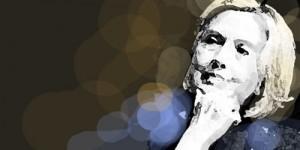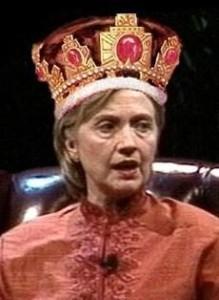 Print
Print  PDF
PDFObama was the classic Underdog archetype. Social media wasn’t his communications vehicle, it was part of his story. People ask if Hillary Clinton will have a social media advantage because Obama did or if the Republicans will ever get it right. Those are the wrong questions. Ask if Hillary can adapt her archetype to work with social media.
Politicians are brands. Like most brands, they exist in the heads of the voter (or nonvoter as the case may be) not in the ad copy or expensive political messaging. This doesn’t mean that political messaging isn’t important or powerful. It is. But in this multiplatform, transmedia world, where we intersect with a politicians story at multiple entry points, it’s a much more complex proposition.
The Obama campaigns of 2008 and 2012 are hailed as marketing high points because they of the effective integration of social media. Does this mean Democrats have the edge for 2016? As we wait for Hillary announce her candidacy, the pundits will go from speculating to analyzing her ability to engage across social networks. People will be watching to see if her social media team will have the chops that Obama’s did and be able to defeat the traditionally social-media-challenged Republicans in cyberspace if not in the polls.

Obama was the poster child for social media in politics, particularly when compared to the Romney Campaign. As the first “social media president,” he was tech-savvy, not afraid of the social media ethos and an early entrant into the social media space. Since social media is about relationships, having over four years head start gave him an enormous leg-up against Romney in 2012 even without Romney’s help creating Tweetable quotes.
No candidate can dare ignore the power of social technologies in reaching voters and mobilizing support and donations. However, we’re in a different world now. We’re past the shiny penny stage. No more surprises when a candidate posts on Facebook, Twitter or YouTube. Bill Clinton got the glory for going on Jay Leno. Barack Obama got it for Facebook. End of story. Both are old news. No more early entrant advantage.
Political machines can and should hire smart people who know how to manage social platforms, big data crunchers who know how to harvest and track voters (and their friends) from network to network, social scientists to build psychographic models, and wordsmiths to craft messages that speak to the hearts of highly targeted segmentation. The advantage now comes from clicking on the ‘advanced’ button and understanding the psychology–how the social media environment has changed the rules and how that fits with a candidate’s brand.
Social media is a communication tool that has distinct properties compared to other platforms. Social media is open, unpolished, quirky, emotional and responsive. These qualities have to fit the brand story a politician wants to tell, or at least the persona he or she wants to sell.
Stories have recognizable structures that become the scaffolding of meaning. They have linearity, causality, conflict and roles. Our brains process stories easily because they condense the complexity of life into known archetypes, metaphors and patterns. Archetypes allow stories to transcend individual differences and lock onto values, emotions and experience. They let us deliver a lot of information with a few words or gestures. Carl Jung (1972) argued that archetypes are innate psychological structures that form the patterns of human experience, even across cultures. We all form these motifs. The details vary but the patterns remain the same.
The archetype a politician presents triggers expectations about who they are and how they’ll behave. It’s important for a politician’s success that the expectations are met—that behaviors aren’t continually confusing the voter or calling their archetypal image into question. Obama was an Underdog, Reagan was an Everyman, Teddy Roosevelt was an Outlaw, McCain was a Warrior, John Kerry tried unsuccessfully tried to pass himself off as a Warrior but was more the Scholar. Bill Clinton was an Everyman, George Bush Sr. a Statesman, George W. Bush was lucky because Al Gore was a Politician, which, ironically, is not a good archetype for a politician. Hillary Clinton? I’ve seen her referred to as the wise woman but, in this potential election of political dynasties (how un-American is that?), she comes across more as the Ruler archetype (1).
Archetypes matter for social media success. It isn’t just about honesty and integrity, although that would be change in politics. It’s about the fit between the politician’s archetype, the message and the medium of choice. Some platforms will support a message, others will contradict. As Henry Jenkins (2007) writes about transmedia storytelling, each medium should be used for what it does best, integrating what we learned from Marshall McLuhan (2003), that the medium is part of the message, not just a vehicle for it. The election is just one big transmedia story.
In the case of all brands, from products to politicians and causes, the coherence and consistency of the message is intertwined with its mode of transportation. The most basic of social media rules, such as ‘do not sell’ and ‘do not just talk about yourself,’ violate traditional rhetorical patterns and challenge brands to find a new archetype-consistent approach. Social media is relational. Underdogs and Everyman are expected to talk to everyone. Rulers and Sages are not.
Lots of things beyond the mode of delivery frame messages and prime our brains to influence interpretation. Cognitive psychologists, conflict resolution experts and smart marketers know that the interpretation of any piece of information can be entirely changed by a host of things we can control and still more that we can’t.
Social media, however, is a big one. Social media is an Outlaw. It was a game changer, a paradigm shifter, a business model disrupter and all those other adjectives and metaphors we all use trying to describe the extraordinary changes that accompanied the ability to connect peer-to-peer and manipulate information and content, 24/7, independent of time or space, most of the time for free. Even the expressions of joy and silliness or other unmentionable on YouTube, Instagram and Vine are mold-breakers. Social media is an enabler of the Underdog, the Everyman, the Outlaw and the creator of Heroes. It is the antithesis of stability and control, the Ruler and the Sage.
A tweet comes with expectations—a cognitive anchor– about the type of content. We expect it to be current and unproduced. Raw and timely. Content that doesn’t fit is either dismissed or, as many a politician has unhappily discovered, ‘repurposed’ to illuminate the misstep. The platform triggers existing metaphors and filters as successfully as Lyndon Johnson’s “Daisy” commercial did in the 1964 presidential election against Goldwater. Nothing says ‘warmonger’ like the image of an innocent young girl plucking daisies next to a a nuclear bomb blast. Similarly, nothing says ‘phony’ like a calculated tweet two days after the disclosure of deleted email and the ‘privacy privilege’ defense or, on the other side of the aisle, hiring a social media manager without reading their personal Twitter feed.
Even unrelated images influence how people interpret messages, which is why people stick pictures of puppies and smiling children into campaign documents at the drop of a hat. Pinterest versus Facebook, Merkat versus Instagram, CNN versus Fox. As McLuhan warned, the container provides meaning of its own.

For Obama, as the classic underdog on a hero’s journey, social media wasn’t his communications vehicle, it was part of his story. What does this mean for Hillary Clinton? Don’t ask if Hillary will have an advantage with social media because Obama did or if the Republicans have learned their lesson after Romney. Those are the wrong questions. It isn’t about party. It’s about archetype. Why do potential candidates like Hillary Clinton or Jeb Bush having troubled getting authentic traction on social media? Why do they look silly where Obama looked human? It’s more than just a charisma thing. It’s because it’s nearly impossible to shirk your archetypal image (made all the more sticky by their relations’ archetypal baggage.) If you’re a Ruler archetype, it sounds funny to talk with an Underdog’s tools. But check out Ted Cruz. Another Underdog who mobilized his social networks to generate a couple of million in campaign donations in two days. It’s not the politics; it’s the archetype that fits.
If this ends up being an election with the dynastic duo of Hillary Clinton against Jeb Bush, it will be interesting to see if either of them succeeds in using social media in a way that makes sense for their archetype. There are solutions, but they won’t be with a selfie stick.
Note: A version of this post appeared on my LinkedIn page as well as on my blog “Positively Media” on PsychologyToday.com
1) Granted, women have it tougher in the political arena given all the double standards, but that’s a different discussion.
References
Jenkins, H. (2007, March 22). Transmedia Storytelling 101. Confessions of an Aca-Fan: The Official Weblog of Henry Jenkins. Retrieved fromhttp://www.henryjenkins.org/2007/03/transmedia_storytelling_101.html
Jung, C. G. (1972). Mandala Symbolism. Princeton, NJ: Princeton University Press.
McLuhan, M. (2003). Understanding Media: The Extensions of Man. In T. Gordon (Ed.). Corte Madera, CA: Gingko Press. (Original work published 1964).

